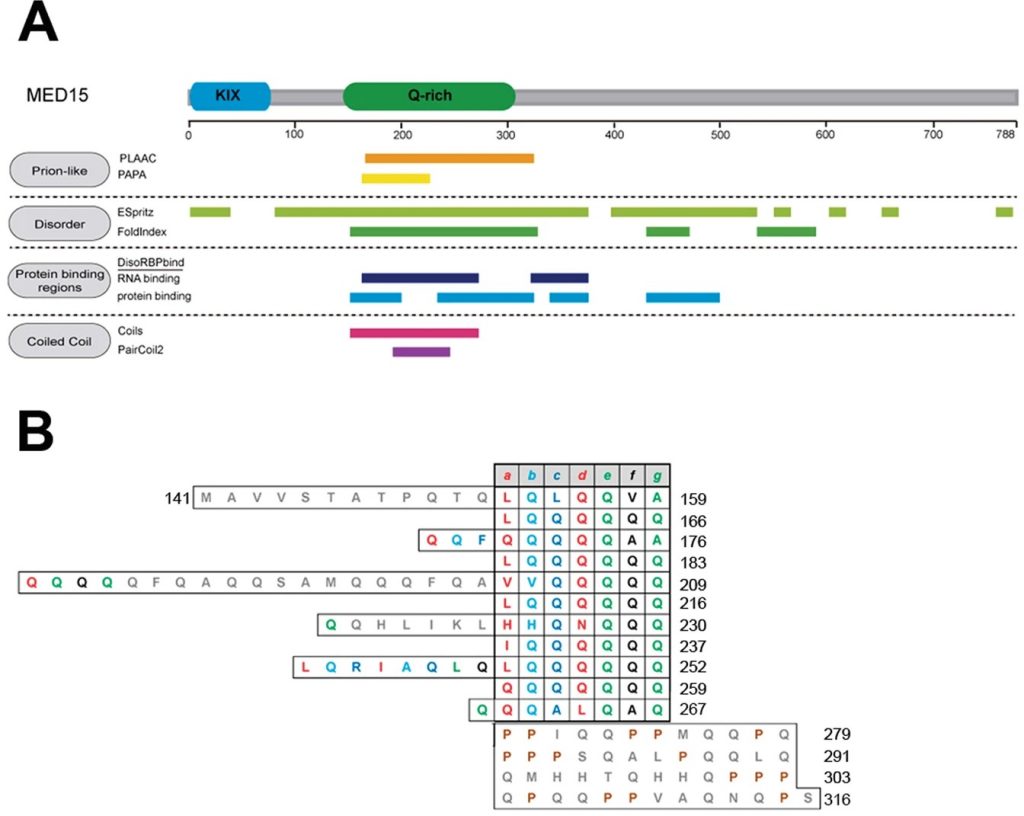https://doi.org/10.1038/s42003-021-01930-8
Communications Biology volume 4, Article number: 414 (2021)

Abstract
A disordered to β-sheet transition was thought to drive the functional switch of Q/N-rich prions, similar to pathogenic amyloids. However, recent evidence indicates a critical role for coiled-coil (CC) regions within yeast prion domains in amyloid formation. We show that many human prion-like domains (PrLDs) contain CC regions that overlap with polyQ tracts. Most of the proteins bearing these domains are transcriptional coactivators, including the Mediator complex subunit 15 (MED15) involved in bridging enhancers and promoters. We demonstrate that the human MED15-PrLD forms homodimers in solution sustained by CC interactions and that it is this CC fold that mediates the transition towards a β-sheet amyloid state, its chemical or genetic disruption abolishing aggregation. As in functional yeast prions, a GFP globular domain adjacent to MED15-PrLD retains its structural integrity in the amyloid state. Expression of MED15-PrLD in human cells promotes the formation of cytoplasmic and perinuclear inclusions, kidnapping endogenous full-length MED15 to these aggregates in a prion-like manner. The prion-like properties of MED15 are conserved, suggesting novel mechanisms for the function and malfunction of this transcription coactivator.
